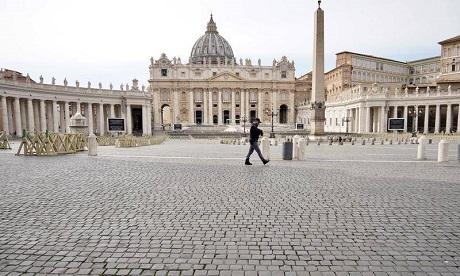The Vatican tourism revenue has been hit hard by the pandemic.
Like other major visitor hotspots, the Vatican is predicting big losses and has had to make cutbacks.
The museums (which include the Sistine Chapel) cost about €20 (about $NZ35) to visit.
Normally, tens of thousands of people arrive every day, generating millions of dollars in revenue.
Between 2016 and 2020 the Vatican reported constant income and expenses: revenue, in the region of €270 million, with expenses at around €320 million,, leaving a running deficit.
However, the Vatican stresses it will not default on its financial obligations.
Besides the losses from Vatican tourism, public donations are down, both through Peter’s Pense (direct donations to the Holy See) and contributions from the Dioceses.
It costs a lot to run Vatican City and the Pope’s business, Father Juan Antonio Guerrero Alves, Prefect of the Secretariat for the Economy says.
He says best-case projections show a loss of 25 percent whilst worst-case predictions predict a loss of 40 percent.
Pope Francis has issued new guidelines for Holy See belts to be tightened.
All expenditure must be approved by a new central ordering system through set vendors, to establish “a process of economic efficiency and sustainability.”
The Vatican was built in 326 AD. Palaces were later added by consecutive popes and it grew to become one of many Papal states under Roman rule, but it is the only one to have survived.
It sits inside a wall within Italy’s capital city Rome and is the spiritual heart of the Roman Catholic church.
Vatican City is unique in that it is deemed a nation state in its own right. It is the smallest state in the world for its land size and population and has about 1,000 permanent residents, including the pope.
Source
- Forbes
- Image: Glen Innes Examiner
News category: World.




